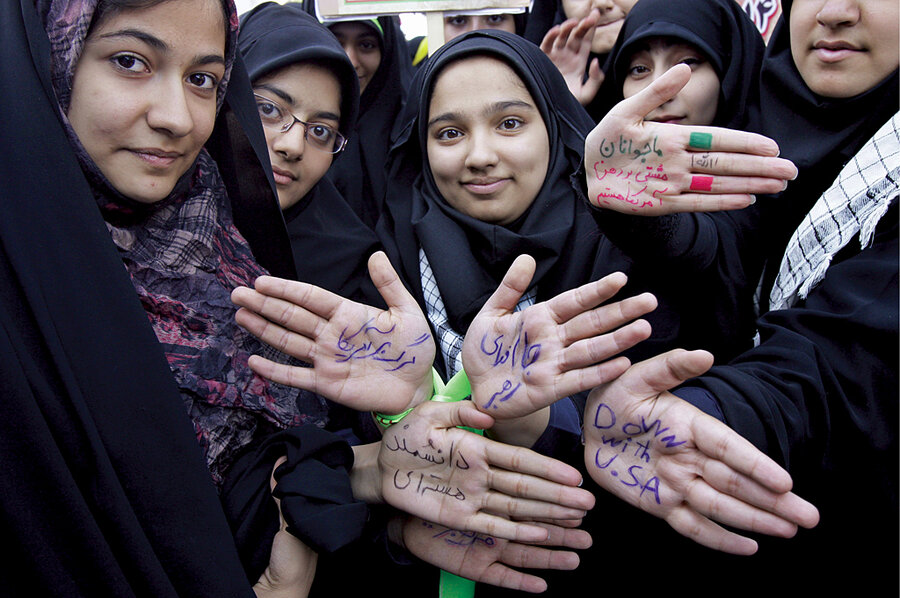Is it Iran's leader -- or Iran?
Loading...
The “great man” theory of history was appealing in its simplicity. It promised that you would understand the world if you focused on several dozen individuals – a few kings, generals, and warlords; a scrum of statesmen and scholars; a handful of rebels and scientists. Napoleon and Martin Luther were two examples historian Thomas Carlyle had in mind when he developed the theory.
There’s no doubt that a small number of remarkable individ-uals ride the flood tide of history to fame and fortune. But that’s not enough to understand the world. The society into which one of these larger-than-life characters is born and the culture and history he or she inherits are of huge importance. Leaders don’t spring from the soil, sociologist Herbert Spencer argued. They have to be understood along with the people they lead and the world in which they operate.
So when you read Scott Peterson’s profile of Ayatollah Ali Khamenei (click here), the man designated as “God’s deputy on earth” by Iran’s political/religious establishment, you also need to know about Iranians; the Shiite faith; the cultural provenance of Persia; and the grievances, violence, and revolutionary experimentation of his nation’s past three decades.
That’s what Scott brings to the table. He has made 30 visits to Iran since 1996, seen hopes for a freer society rise and fall, made dozens of friends, and worked tirelessly to try to understand this rich, turbulent 2,500-year-old culture. His 2010 book, “Let the Swords Encircle Me: Iran – A Journey Behind the Headlines,” provides a multilayered perspective of a complex population and a culture that is both repressive and accommodating.
“For three decades, powerful forces have stood in tension with each other,” Scott writes in his book, “the religious hard-liners against the secular moderates; those who demand isolation against those who yearn for contact with the West. The result has been a destructive imbalance in Iran’s ‘sacred’ political system.... What for some Iranians is a dated, irrelevant governing philosophy holding the country back in political, economic and cultural seclusion is for True Believers still the only one that counts.”
Iranians, like Americans, can be inconsistent. They can love their country, dislike their leaders, and categorically reject foreign criticism of either. Even those deeply opposed to theocracy have their own vision of change, Scott says: “They want to grasp freedom for themselves and wage with their own hands the internal battle that will define what that freedom means.”
So what should we make of Mr. Khamenei, the once-timid cleric who is Iran’s supreme power broker? As you’ll see in Scott’s cover story, Khamenei has his reasons for distrusting the United States, Israel, and secular society. But he is not a madman. He is educated and well read, loves poetry and music, and lives modestly. He is not as schooled or as revered as his famed predecessor, Ayatollah Khomeini. He may believe the Islamic republic is destined for epic conflict with nonbelievers. Or he may just be trying to hold the current system together. In short, he is Iran’s spiritual and political leader and a quintessential product of a complex and contradictory society.
Understanding Khamenei is necessary, but not sufficient, to understand Iran. There’s no better guide to the man or the country than Scott Peterson.
John Yemma is editor of the Monitor.






